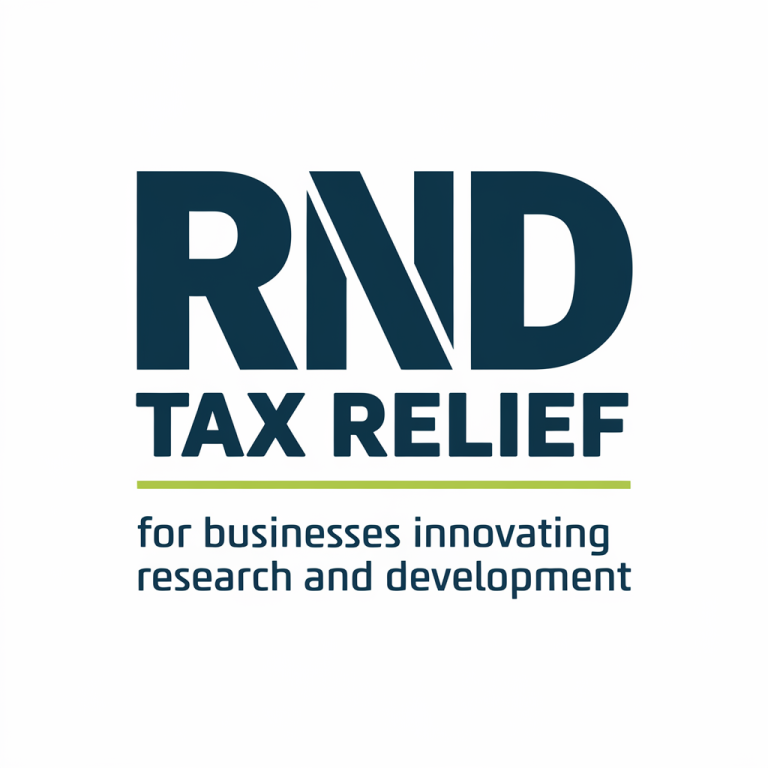How R&D Tax Relief Supports Financial Risk Management in the UK
Every business in the UK faces financial risk. Whether it’s market uncertainty, supply chain disruption, or the cost of innovation, risk is part of doing business. But there is a way to manage it more effectively. For companies investing in research and development (R&D), the government-backed R&D tax relief scheme can play a key role in reducing financial pressure while encouraging innovation.
In this article, we’ll look at what financial risk management means, why R&D projects often feel riskier, and how R&D tax credits can help businesses strengthen their financial position.
What is Financial Risk Management in Business?
Financial risk management is the process of identifying, assessing, and reducing the potential financial risks a business may face. The aim is simple: protect profits and ensure the company can continue to meet its financial obligations.
Common practices include:
- Risk assessment identifying where financial losses could occur.
- Vulnerability analysis looking at weak points in the business model.
- Risk treatment creating strategies to handle risks if they materialise.
- Ongoing monitoring checking performance and adapting to changes.
For example, a retail SME that relies heavily on overseas suppliers faces the risk of currency fluctuations or delivery delays. By building contingency plans and maintaining cash reserves, the business reduces exposure to financial shocks.
This same principle applies to innovation. If a company is investing in R&D, it needs a strategy to manage the higher levels of uncertainty.
Why R&D Projects Increase Financial Risk
R&D is exciting, but it’s also unpredictable. Businesses often face higher risks when committing resources to innovation, including:
- Upfront costs before seeing any return.
- Uncertain outcomes projects may not deliver the expected results.
- Long development timelines money is tied up for months or even years.
- Competitive pressure rivals may bring products to market faster.
Take the example of a UK software firm developing artificial intelligence features. The company may spend hundreds of thousands of pounds on staffing, data processing, and testing. If the product doesn’t work as expected, that money could be lost. Without a safety net, innovation can feel like a gamble.
Innovation Funding Options in the UK
The UK has several funding schemes designed to support businesses taking on innovative projects. These include:
- Innovate UK grants government-backed support for projects with commercial potential.
- Horizon Europe international collaboration and funding for cutting-edge projects.
- Knowledge Transfer Partnerships (KTPs) collaboration between businesses and universities.
- Catapult Network centres of excellence offering funding and support for innovation.
These schemes are valuable, but not every business qualifies. One of the most widely accessible forms of innovation funding remains R&D tax relief, which directly reduces the cost of research and development.
For context, you can read more about Research and development and its role in business growth.
What Are R&D Tax Credits and How Do They Work?
R&D tax credits are a UK government incentive designed to support businesses investing in innovation. The scheme allows companies to reclaim a percentage of their qualifying R&D costs, either as a reduction in their corporation tax bill or as a cash repayment.
Depending on the size of the company and the type of claim, businesses can receive back up to 33% of their eligible expenditure.
For example, a small engineering firm spending £150,000 on qualifying R&D could potentially reclaim £50,000 through the scheme. That’s money that can go straight back into staffing, equipment, or further development.
The official guidance is available from HMRC, but many companies work with advisors to ensure their claim is maximised and compliant.
How R&D Tax Relief Reduces Financial Risk
R&D tax relief helps businesses reduce financial risk in several ways:
- Improves cash flow the refund or tax reduction puts money back into the business quickly.
- Provides a safety net for failed projects even if the R&D doesn’t deliver, the costs can still qualify for relief.
- Lowers the net cost of innovation reducing the financial burden makes investment less risky.
- Supports adaptability businesses can take on projects with more confidence, knowing there’s financial backing.
Take the case of a UK manufacturing company testing new sustainable materials. Developing prototypes is expensive and risky. By claiming R&D tax credits, the company reduces overall project costs, protecting its financial stability while pursuing innovation.
Who Qualifies for R&D Tax Relief?
Not every project qualifies, but the scheme is broader than many business owners realise. To claim R&D tax relief, your company must:
- Pay corporation tax in the UK.
- Be working on a project that seeks to overcome scientific or technological uncertainty.
Qualifying projects
- Developing new or improved products, services, or processes.
- Advancing knowledge or capability in your industry.
- Solving problems that are not obvious to professionals in the field.
Qualifying costs
- Staff costs (salaries, NIC, pensions).
- Subcontractor and externally provided worker costs.
- Consumables such as materials and utilities.
- Software used in the R&D project.
A tech startup developing a new app, or a food manufacturer testing new packaging methods, could both potentially qualify if they are pushing technological boundaries.
Strategic Advantages of R&D Tax Credits
Beyond the immediate financial return, R&D tax credits provide long-term advantages, including:
- Encouraging reinvestment into future R&D projects.
- Building investor confidence by reducing perceived financial risk.
- Supporting resilience during economic uncertainty.
- Helping businesses stay competitive both locally and globally.
By aligning business goals with financial incentives, R&D tax relief transforms innovation from a risky expense into a manageable growth strategy.
Best Practices for Using R&D Tax Credits in Financial Risk Management
To make the most of R&D tax relief, businesses should:
- Plan ahead budget R&D with the tax relief in mind.
- Track costs from day one keep accurate records of staff time, consumables, and subcontractor invoices.
- Work with advisors ensure compliance with HMRC rules and avoid underclaiming.
- Review projects regularly not every activity qualifies, so identifying eligible work early saves time later.
A technology startup in London reported that by planning its R&D claim early, it saved around 20% of its annual innovation budget. This allowed it to take on a second project that would have otherwise been delayed.
Frequently Asked Questions
What is the role of R&D tax relief in financial risk management? It reduces the net cost of innovation, improves cash flow, and provides a financial cushion for projects that may not succeed.
How do R&D tax credits improve cash flow? By reducing corporation tax or providing a cash refund, money is returned to the business, strengthening day-to-day finances.
Can startups claim R&D tax credits in the UK? Yes. Many startups benefit, especially if they’re loss-making, as they can claim a cash credit instead of tax reduction.
Is R&D tax relief only for large businesses? No. SMEs benefit the most, but large companies can also claim through a different scheme.
Final Thoughts
Innovation is always a risk, but it doesn’t have to threaten financial stability. With effective financial risk management and support from R&D tax relief, UK businesses can reduce uncertainty and invest with confidence.
Want to reduce the financial risk of innovation? Claim your R&D tax relief today. Book a free consultation with our team: Contact Us.





